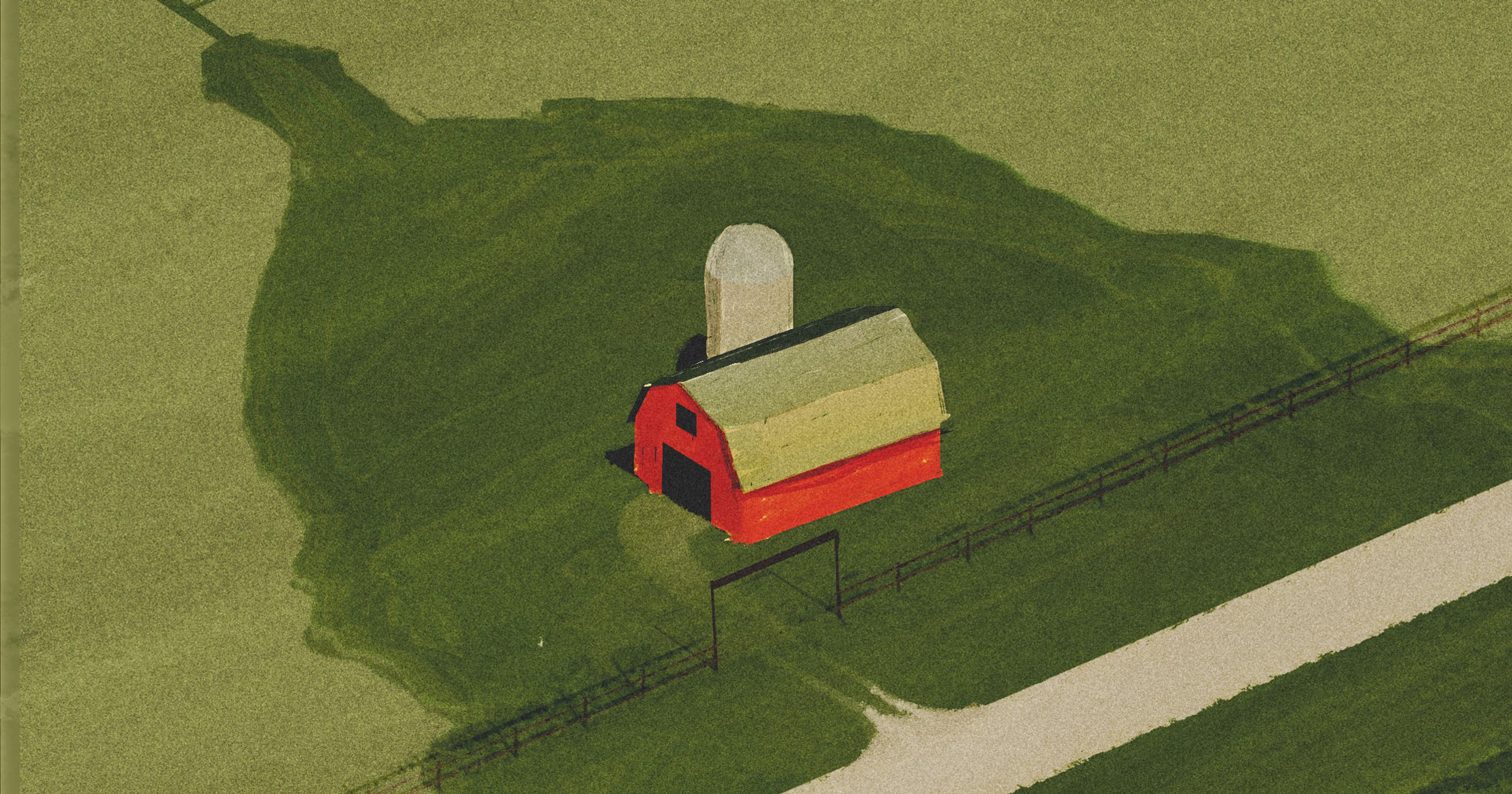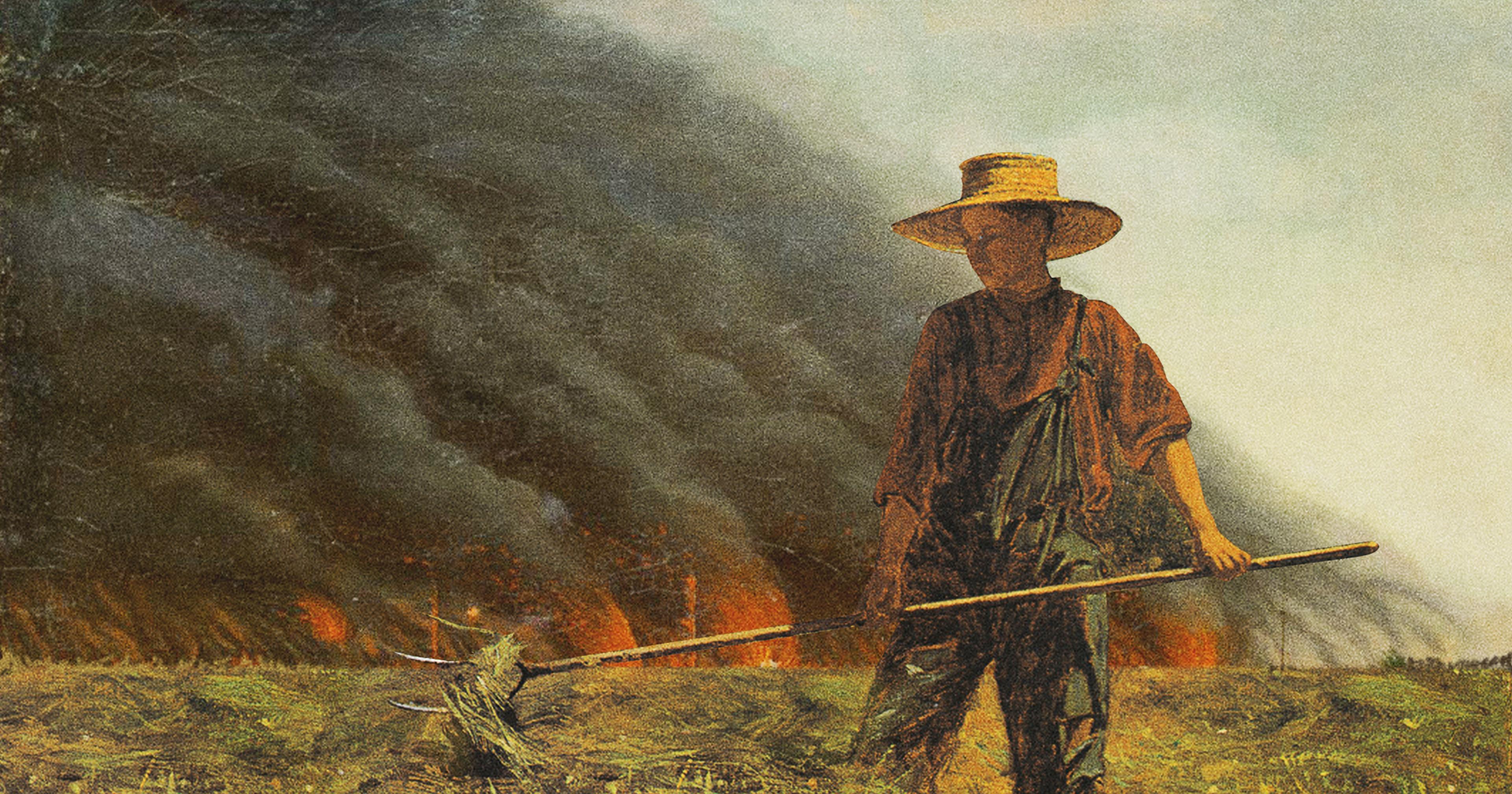With arable land increasingly unaffordable, some small producers are squeezing in between commodity growers.
It’s 100 degrees Fahrenheit in Socorro, a West Texas border town wedged between Mexico and I-10 as it runs north into the white gypsum sands of New Mexico. Not a bird, bug, or lizard is stirring. Several humans, however, are sweating quietly in the shed that comprises Bodega Loya. Honeydew, honeycrisp, piel de sapo, white snow leopard — Ralph Loya, the bodega’s mustachioed proprietor, rattles off the names of melons he’s grown on his 7-acre farm out back as he pulls several from the fridge to slice into pale orange and green wedges.
Eileen Candelaria is among those gathered in the shed nibbling chilled fruit. A childhood friend of Loya’s, she wandered over after hearing that, since he retired from his staff job at the University of Texas, he’s been growing stone fruits and radishes; okra and tomatillos; Apache red sugarcane, several kinds of chiles, and a type of Piro Indian corn whose seeds were passed down through Loya’s ancestors for 400 years. Loya’s farm, inherited from his in-laws, is a rarity in the middle of the Chihuahuan Desert, where large-scale cotton farms dominate.
“Back in the day there was little farms everywhere and everybody would sell their stuff on the side of the road,” Candelaria remembers. These days, Loya’s is the only one, and it’s attracting customers from miles around. “We can’t seem to grow enough. The more we grow the more we sell,” said Loya.
Small farm advocates are prone to rattling off the virtues of these sorts of operations: Small farms can feed their neighbors; small farms can revitalize rural communities; small farms can help turn the tide on diet-related diseases and nutrition insecurity. These optimistic talking points are in evidence at Loya’s. He employs several farmhands and his bodega carries duck eggs from a local guy, pistachios grown by a retired dentist down the road, asadero cheese from a nearby dairy — allowing him to sell a range of whole foods in a town mostly served by Walmart.
But many small farmers must contend with a stark reality: Consolidation in agriculture continues to increase while small farms continue to struggle. Making things worse, farmland prices are surging across much of the U.S.; according to the U.S. Department of Agriculture, the average price of farmland was $4,080 per acre in 2023, representing a 7.4 percent increase over 2022. In some parts of the country, prices are higher still: Average Iowa farmland prices rose to $11,835 per acre in 2023; in Monterey County, California, which encompasses the Salinas Valley, farmland values are currently $15,518 per acre.
Reclaiming family land, if possible, makes financial sense in this context, even if it means your neighbors are farming in very different ways than you; it also means finding creative ways to make a profit. “If you have a different business model than everyone else around you, it’s important to consider what ramifications that has for your business,” said Mike Lavender, operations director at the National Sustainable Agriculture Coalition. Small farmers in the middle of commodity land can face challenges with water access, building a customer base, chemical drift, and nutrient runoff from adjacent large-scale farms.

Ralph Loya processing sugarcane.
According to a survey conducted by the U.S. Department of Agriculture, 5,700 small farms went out of business between 2022 and 2023, on top of 142,000 losses between 2017 and 2022. Meanwhile, the number of farms with more than $5 million in sales doubled between 2017 and 2022, to 16,226. USDA has announced plans to better support local small- and medium-sized operations; it’s impossible to know if these plans will survive a new administration.
For a farmer like Loya, “One of the positives is, hey, everybody in my community knows that this is the only place to get X, Y, or Z. The flip side is, is that enough to sustain your business model?” Lavender said. Loya relies on direct-to-consumer sales — although he also rents out space to artisans, runs a coffee shop, and plans to grow high-value grapes to supply local wineries.
One big problem with being surrounded by 1,000-acre cotton farms in the drought-plagued Southwest, however, is water. A few years ago, cotton farmers cut back their plantings because they couldn’t get full flood irrigation allotments from the Rio Grande. This year, with water plentiful enough, the cotton farmers went back to planting their entire acreages. But that meant there was less water for Loya. “Those big farms got the water,” he said.
Dedicated to Healthy Land
Six years ago in Lovilia, Iowa, Beth Hoffman and her husband, John Hogeland, took over his family’s 530 acres (and purchased another 40) in a region packed with calf/cow operations and commodity corn and soybeans. In a state where pollution is rampant — agricultural nutrients have contaminated 1,000 miles of waterways and contributed to a massive dead zone in the Gulf of Mexico — the two are committed to farming sustainably.
Whippoorwill Creek Farm sells grass-fed and finished beef, pastured goat, and chemical-free produce; Hoffman and Hogeland also host on-site cooking and writing classes as well as farm dinners and stays. Like Loya, they’ve learned that “Everybody likes having the small-scale farm in their community,” Hoffman said. Unlike Loya, they’ve had to cast a wide net to find it. “Living in a rural area means, in a 10-mile radius, there’s maybe 35 people,” Hoffman said.

Goats on Whippoorwill Farm
·Beth Hoffman
A lot of would-be customers discover Whippoorwill Creek through Hoffman’s blog. There’s no drive-up stand at the farm but people can order meat bundles or quarter, half, or whole animals for farm or meat locker pickup; they also sell meat wholesale. Produce is usually reserved for restaurant customers, although Hoffman will offer it to individual consumers when she’s got extra.
But what works for one operation isn’t necessarily applicable to neighboring small operations. Hoffman has neighbors who grow Kinderkrisp apples, although “not commercially yet, because where would they bring all these apples? We don’t have any processors in the state,” she said. The reasons go back generations: Farms in Iowa “were established as stops on a rail line to bring products to cities and for export. This always was a corn, cattle, and hogs kind of place. We’re establishing something new.”
Becoming the Boss
For specialty and niche producers in commodity-land, “There isn’t necessarily the path worn in your area for aggregation or distribution or selling to local schools or institutions,” said Lavender. Helping to forge those connections is part of the mission of the Agriculture and Land-Based Training Association (ALBA) in Salinas, California. ALBA hosts year-long education courses targeted at Latino farmworkers looking to start their own farms, then leases 90 acres to about 40 of them for up to five years. Jessie Najera is one of those former farmworkers. Growing up in Oaxaca, he moved to Fresno as a teenager and began harvesting wine grapes and lettuce. Najera took the ALBA classes, he said through an interpreter, because he envisioned having his own company one day.
“If you’re the only person operating in a certain way within your neck of the woods, that right there is a logistical hurdle for sure.”
The Salinas Valley is Big Lettuce and Strawberry country, with some of the most expensive ag land in the U.S. Farmer’s markets in Central California are “already totally saturated,” said Aysha Peterson, who acts as a crop advisor for Monterey County’s Resource Conservation District. So, even small operations need to sell to wholesale distributors who want “large quantities of things like celery and broccoli that are not particularly relevant to a Mexican diet.” Najera, assisted by his father and brother, leases 4-1/2 acres from ALBA to grow broccolini and onions, which he sells to a regional distributor; ALBA made the introduction.
Even so, Najera faces many uphill battles. Last year he lost 3 acres of crops to flooding and didn’t realize he could apply for financial assistance to replant (he paid out-of-pocket). Wholesale prices fluctuate wildly — Najera has gotten as much as $38 and as little as $19 a box for broccolini — making profits nebulous. Farmers like him have to “navigate U.S. bureaucracy and all the different kinds of permitting that need to happen, in English and on paper, which are not super familiar to the farmers I’m working with,” Peterson said. When the time comes for Najera to find acreage of his own, Peterson said what’s available around Salinas is either on sandy slopes vulnerable to erosion, or heavy-soil plots adjacent to wetlands. Such hurdles force many immigrant farmers to quit too soon after they’ve begun.
Finding a Niche
In central North Dakota where 5,000-acre commodity grain farms are the norm, Glen Philbrick has transitioned his family’s fifth-generation Hiddendale dairy farm into a diversified operation growing native grassland flowers and organic specialty crops. It’s mostly direct-to-consumer carrots and onions, but he’s also got a romaine lettuce contract this year. Part of this shift resulted from an incident in 2014, when he was hospitalized after exposure to herbicide drift. But the decision to move into niche markets also came from “looking at the margins of commodity and thinking, no, I don’t want to engage in that,” he said. “There’s going to be years that grain’s high, but on average it’s gotten thinner and thinner.”
USDA grant money helps Philbrick stay in business. He currently has a Sustainable Agriculture Research and Education (SARE) grant to test grasshopper-resistant crops. Peterson also believes federal funding is essential to solvency among her network. Five Mexican farmers she works with each got $350,000 grants for Farm-to-School projects. They “felt like they won the lottery. But there are 95 others that are still struggling,” she said.
Hoffman, though, expresses frustration with lack of support from USDA. “There’s a new organic program as of last year but the [local office] doesn’t know what’s going on,” she said. Even when they call leadership for answers, they “can’t get any information. There’s nobody to ask questions of. And we’re the only people who are asking about it because everyone else is getting pigs.” Said NSAC’s Lavender, “If you’re the only person operating in a certain way within your neck of the woods, that right there is a logistical hurdle for sure.” He said NSAC sees an imperative for federal policy to incentivize investments in small farms — like the pandemic-born Local Food Purchase Assistance Cooperative Agreement Program, meant to “spur purchases of local food from local farmers … which used to be more commonplace.” But of course, this also requires well-informed USDA offices.

Ralph Loya surveys his property.
In spite of the challenges, some small farmers remark on one unexpected plus to their positioning among the big guys: respect from their neighbors. Said Philbrick, “I got one who’s conventional and he’s very blunt with me — he says, I hate chemicals. So when I say, ‘Well, here’s what I’m doing to deal with this,’ he’s excited to hear about it.”
“I don’t think that any of the farmers around here are thinking that these things are crazy anymore — specialty crops, why would you do that, or grass-finished beef?” Hoffman said. “I think a lot of people think, wow, what a great idea. If I could get more for my crops, if I could get more for my beef, why wouldn’t I do that? But they can’t because they have [off-farm] jobs. The whole thing’s just set up now so nobody has the time and the infrastructure to do it.”
For Loya, there was never a doubt as to why he would farm where and how he does. “My dad worked for El Paso utilities … but he grew up farming and when we were kids he’d grow vegetables” at a farm a mile from Bodega Loya, he said. “He was just a happy guy so I said, when I retire, I want to farm. I want to be like him.”










